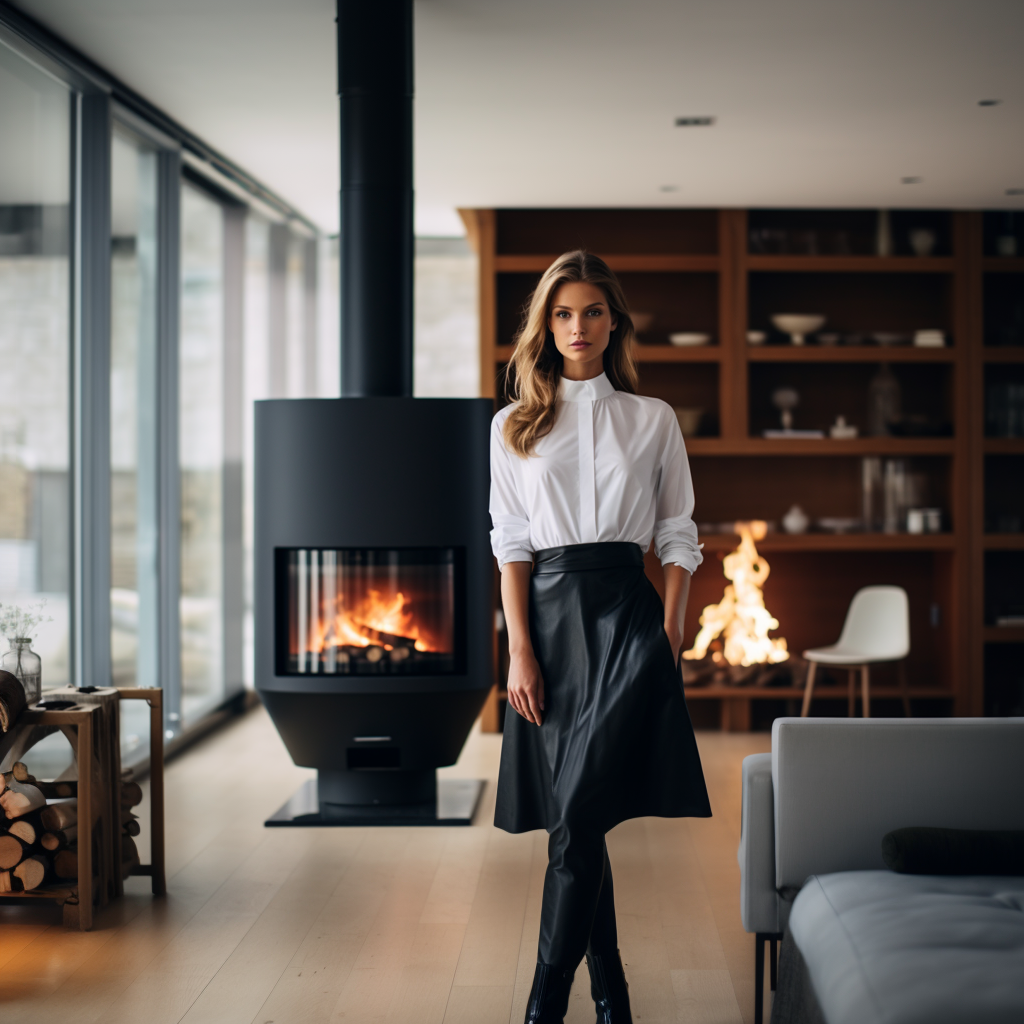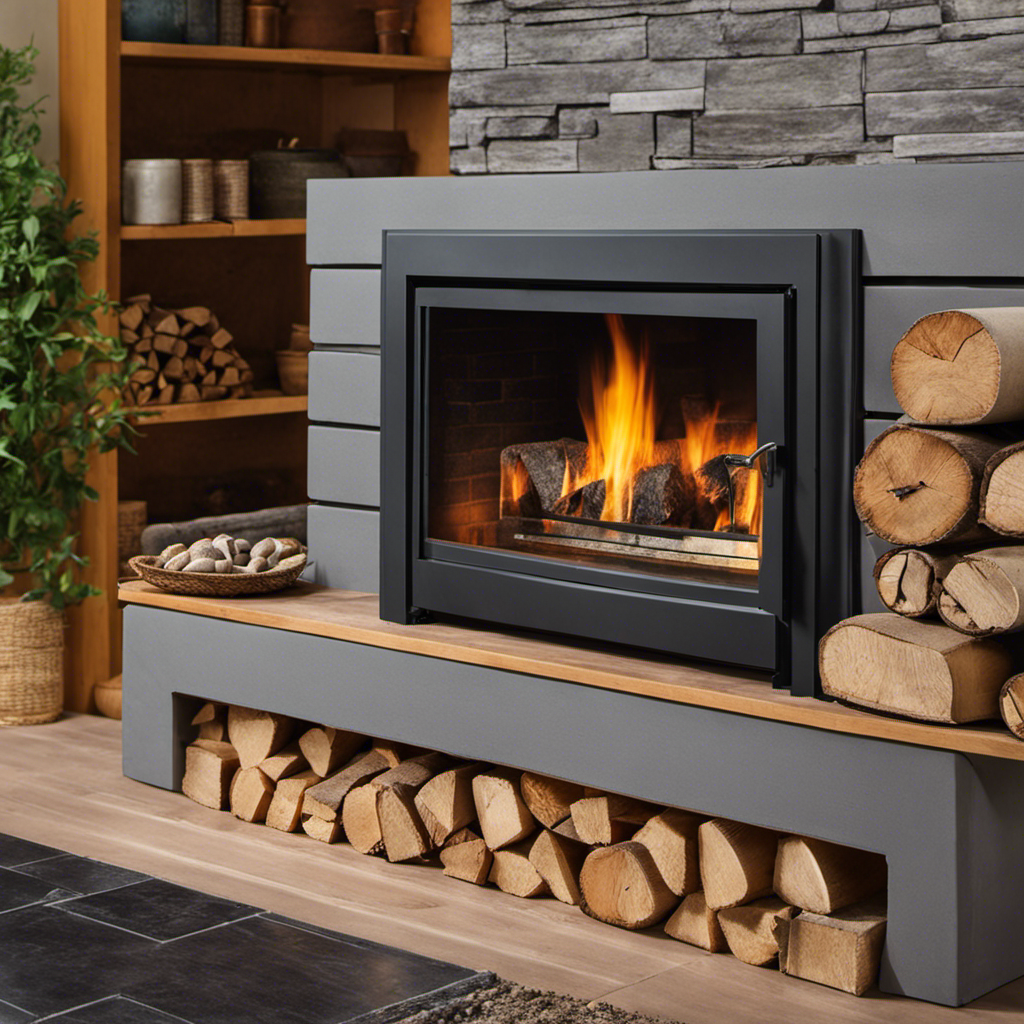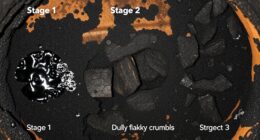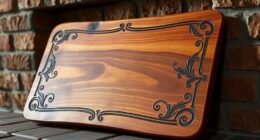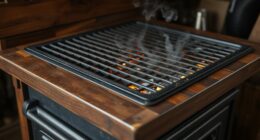
As a wood stove owner, I frequently face confusion and annoyance because of the ongoing problem of smoke. Why does my wood stove produce smoke, even though I try my hardest to avoid it?
Well, let’s dive into the world of draft, wood quality, chimney design, and stove maintenance. By understanding the factors that contribute to smoke, we can take control and enjoy a more efficient and smoke-free experience.
So, grab your firewood and let’s uncover the secrets behind that pesky smoke.
Key Takeaways
- Insufficient ventilation, such as blocked chimneys or closed dampers, can lead to smoky wood stoves.
- Poor wood quality or high moisture content can result in excessive smoke production.
- Improper chimney or flue design can cause smoke backflow into the home.
- Incorrect stove operation or maintenance, like neglecting cleaning or having clogged air vents, can lead to smoky wood stoves.
Insufficient Draft or Air Supply
I think I might be experiencing an insufficient draft or air supply because my wood stove keeps smoking. Inadequate ventilation is often the culprit behind smoky wood stoves.
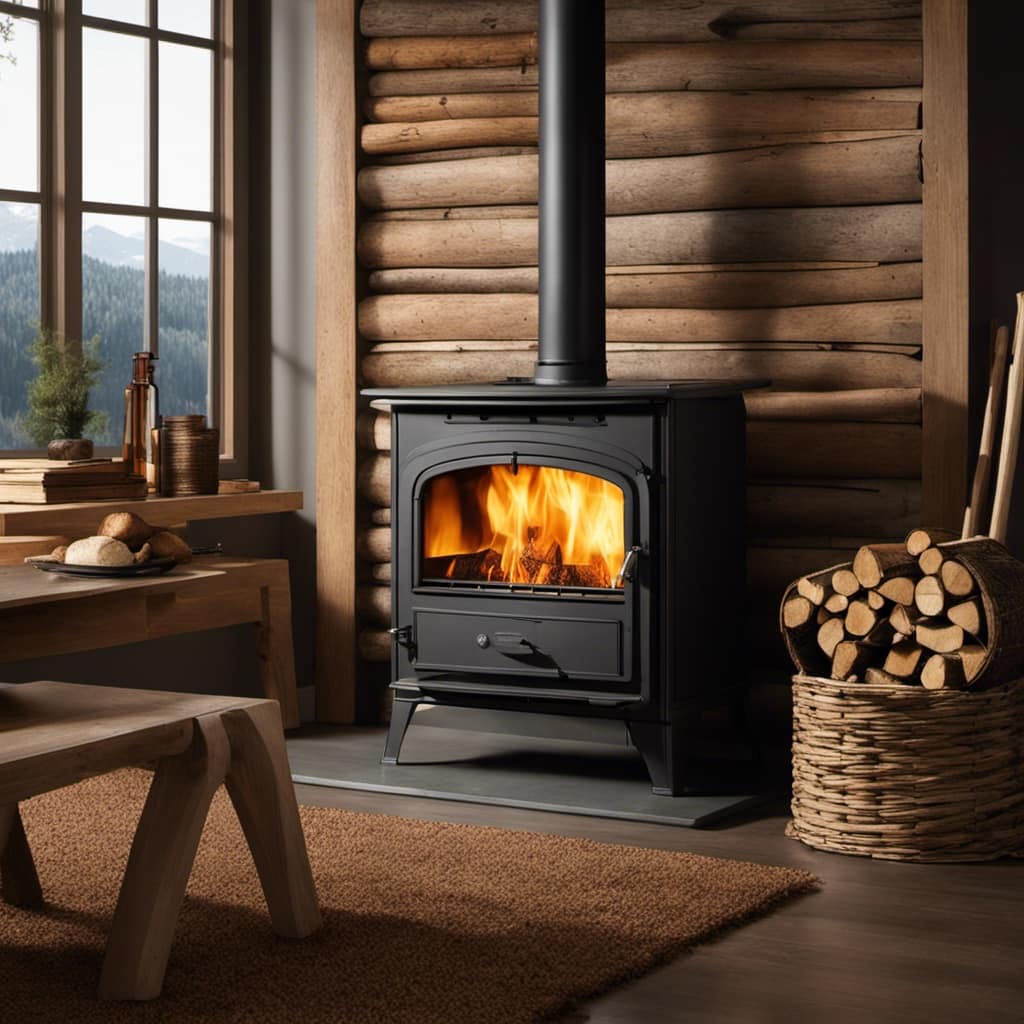
When the stove doesn’t have enough air supply, it can’t burn the wood efficiently, resulting in incomplete combustion and the production of smoke. This can happen due to various reasons, such as a blocked chimney or a closed damper.
It’s essential to ensure proper ventilation by keeping the air vents open and regularly cleaning the chimney to avoid any obstructions.
Additionally, fuel selection plays a crucial role in minimizing smoke production. Wet or unseasoned wood can create more smoke as it contains higher moisture content. Opting for dry and well-seasoned firewood can significantly reduce smoke emissions and improve the overall performance of the wood stove.
Poor Wood Quality or Moisture Content
Due to poor wood quality or high moisture content, my wood stove is producing excessive amounts of smoke. This issue can be resolved by implementing proper wood seasoning techniques and understanding the impact of wood moisture on smoke production.
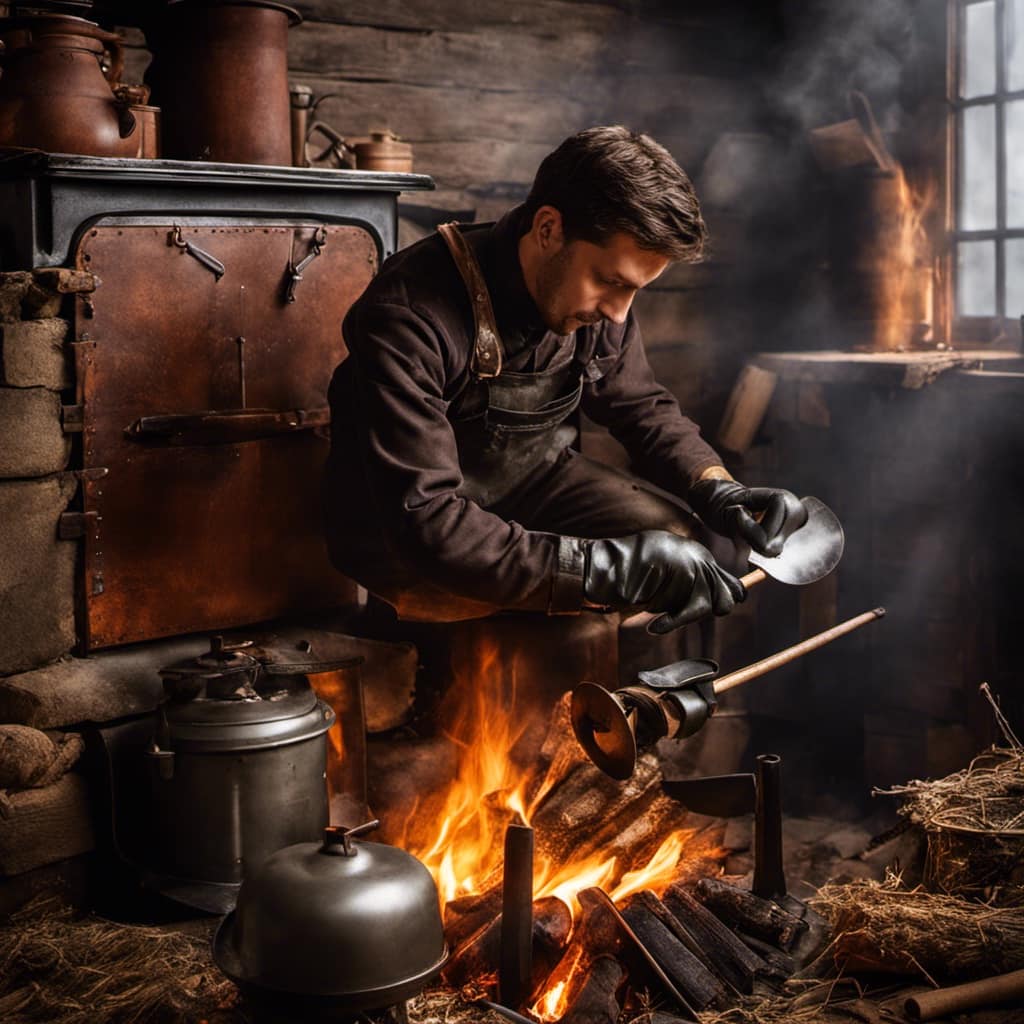
Here are some key points to consider:
- Wood seasoning techniques:
- Splitting the wood into smaller pieces: This increases the surface area and accelerates the drying process.
- Storing the wood in a dry, well-ventilated area: This allows the wood to naturally dry and reduce its moisture content.
- Using a moisture meter: This tool helps determine the moisture level of the wood, ensuring it’s adequately seasoned before burning.
The impact of wood moisture on smoke production:
- High moisture content in wood leads to incomplete combustion and the release of more smoke.
- Excessive smoke can create health hazards, reduce stove efficiency, and contribute to air pollution.
Improper Chimney or Flue Design
The improper design of my chimney is causing smoke to backflow into my home. One possible cause for this issue could be the chimney height. Chimneys are designed to create a draft that pulls the smoke out of the house and releases it outside. If the chimney isn’t tall enough, it may not create enough suction to effectively remove the smoke, causing it to flow back into the home.
Another factor that can contribute to smoke backflow is the flue size. The flue is the passage within the chimney that allows the smoke to exit the house. If the flue is too narrow, it can restrict the flow of smoke, leading to backflow.
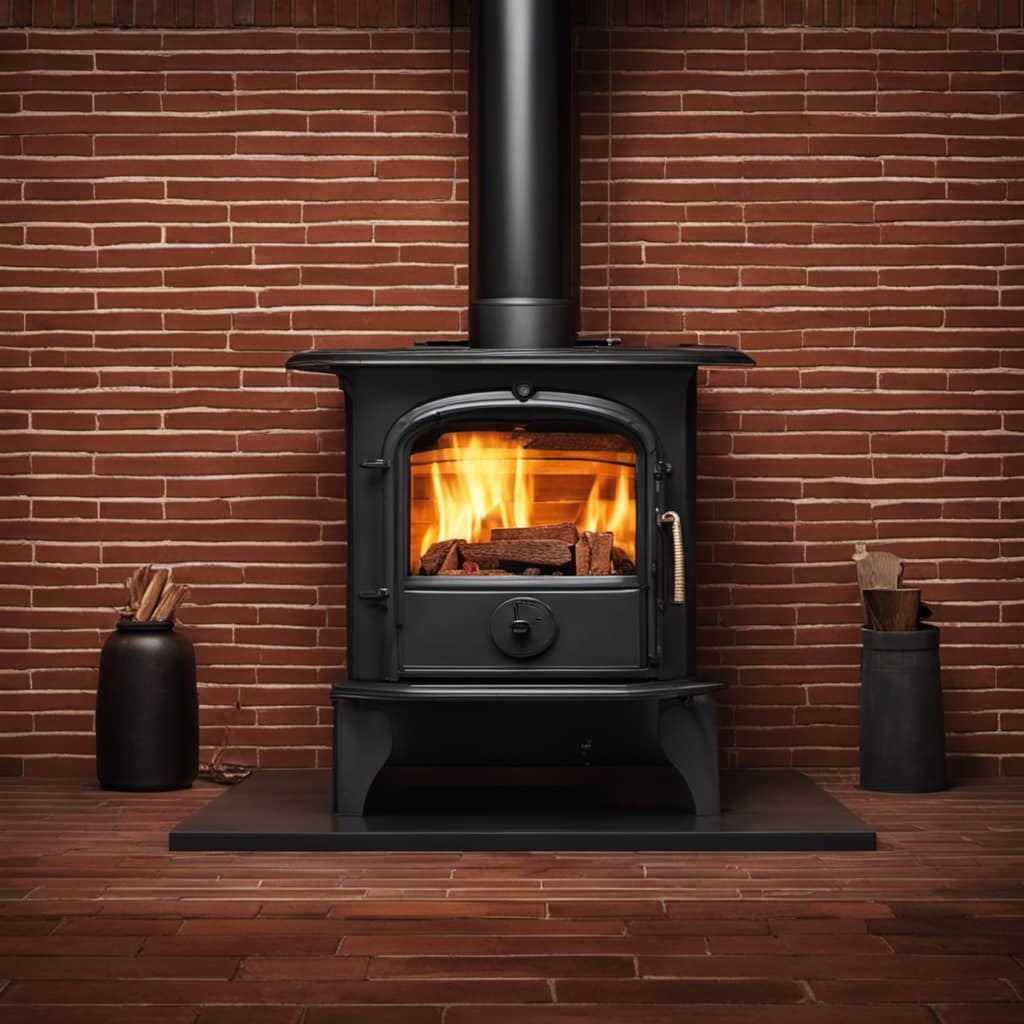
It’s crucial to ensure that the chimney is properly designed and constructed to prevent smoke from entering the home.
Incorrect Stove Operation or Maintenance
My stove isn’t working properly because I haven’t been cleaning it regularly. Neglecting regular maintenance can lead to various issues, including poor stove performance and improper ventilation.
When troubleshooting stove problems, it’s important to consider the following:
-
Clogged air vents: A buildup of dirt, dust, and debris can restrict proper airflow, causing the stove to smoke and operate inefficiently.
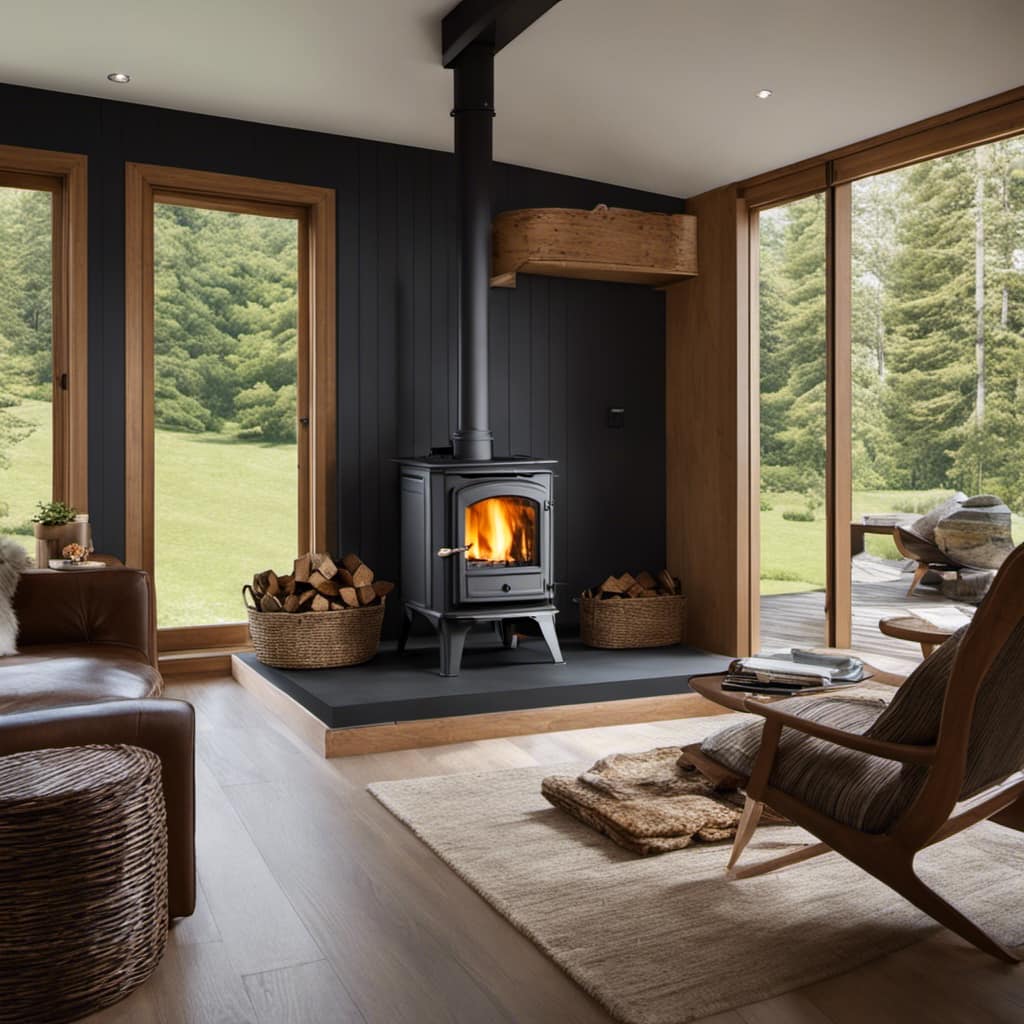
-
Dirty flue or chimney: Over time, creosote and soot can accumulate inside the flue or chimney, obstructing the flow of smoke and leading to backdrafts and smoke entering the room.
-
Damaged door gasket: A worn-out or damaged door gasket can create gaps, allowing air to enter the stove and disrupt the combustion process, resulting in increased smoke production.
To ensure proper stove operation, regular cleaning, including clearing air vents and chimney sweeping, is crucial. Additionally, replacing damaged door gaskets can help maintain proper ventilation and prevent smoke issues.
Environmental Factors Affecting Combustion Efficiency
I often find that environmental factors greatly impact the efficiency of combustion. When it comes to burning fuel in a wood stove, weather conditions and temperature play a significant role.
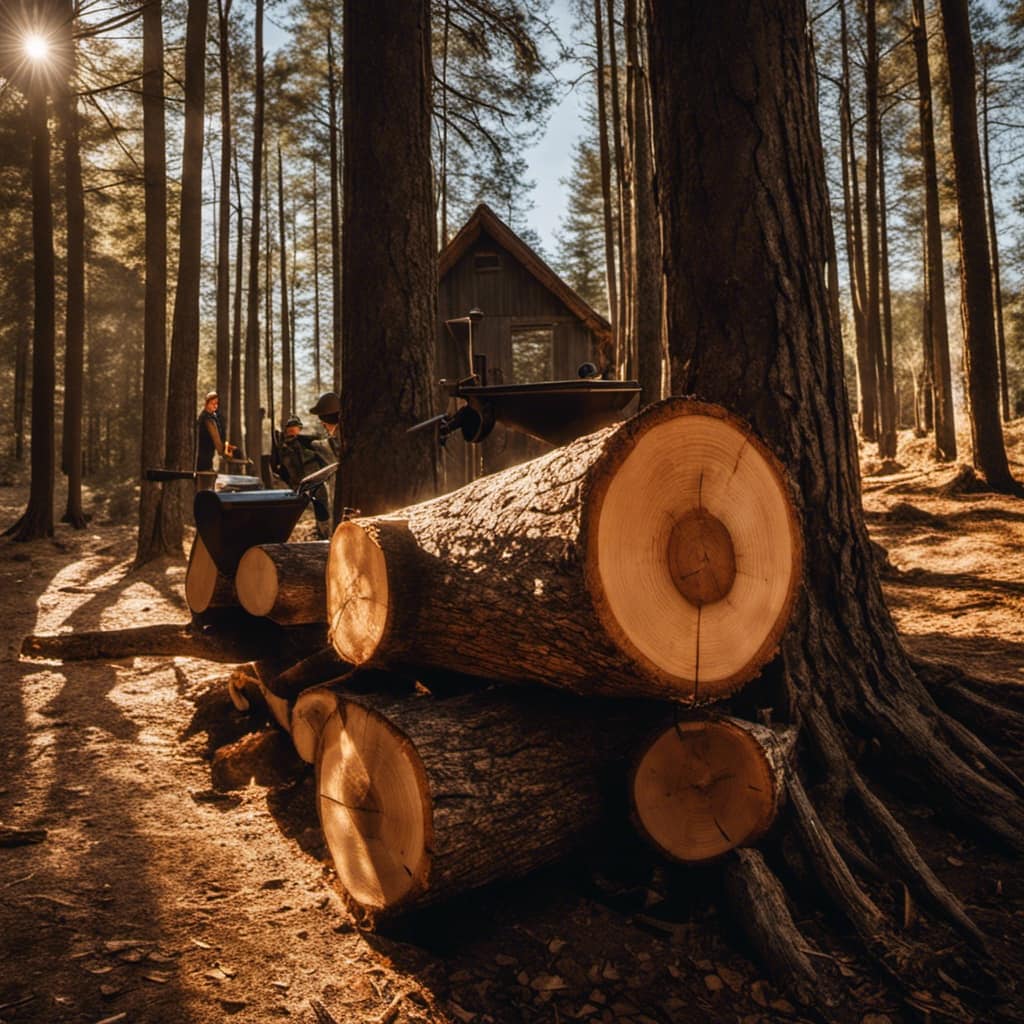
Cold weather can cause the wood to burn less efficiently, leading to more smoke and less heat output. Low temperatures can also make it harder to start a fire and maintain a consistent burn.
Additionally, altitude and atmospheric pressure can affect combustion efficiency. As altitude increases, the air becomes thinner, which can result in incomplete combustion due to reduced oxygen availability. Similarly, changes in atmospheric pressure can affect the draft in the stove, impacting the airflow and combustion process.
Therefore, it’s crucial to consider these environmental factors and make necessary adjustments to ensure optimal combustion efficiency in wood stoves.
Frequently Asked Questions
Can a Wood Stove Smoke Due to a Damaged or Blocked Chimney?
Yes, a wood stove can smoke if the chimney is damaged or blocked. A damaged chimney can cause backdrafts, while a blocked chimney can prevent smoke from properly venting, leading to smoke inside the house.
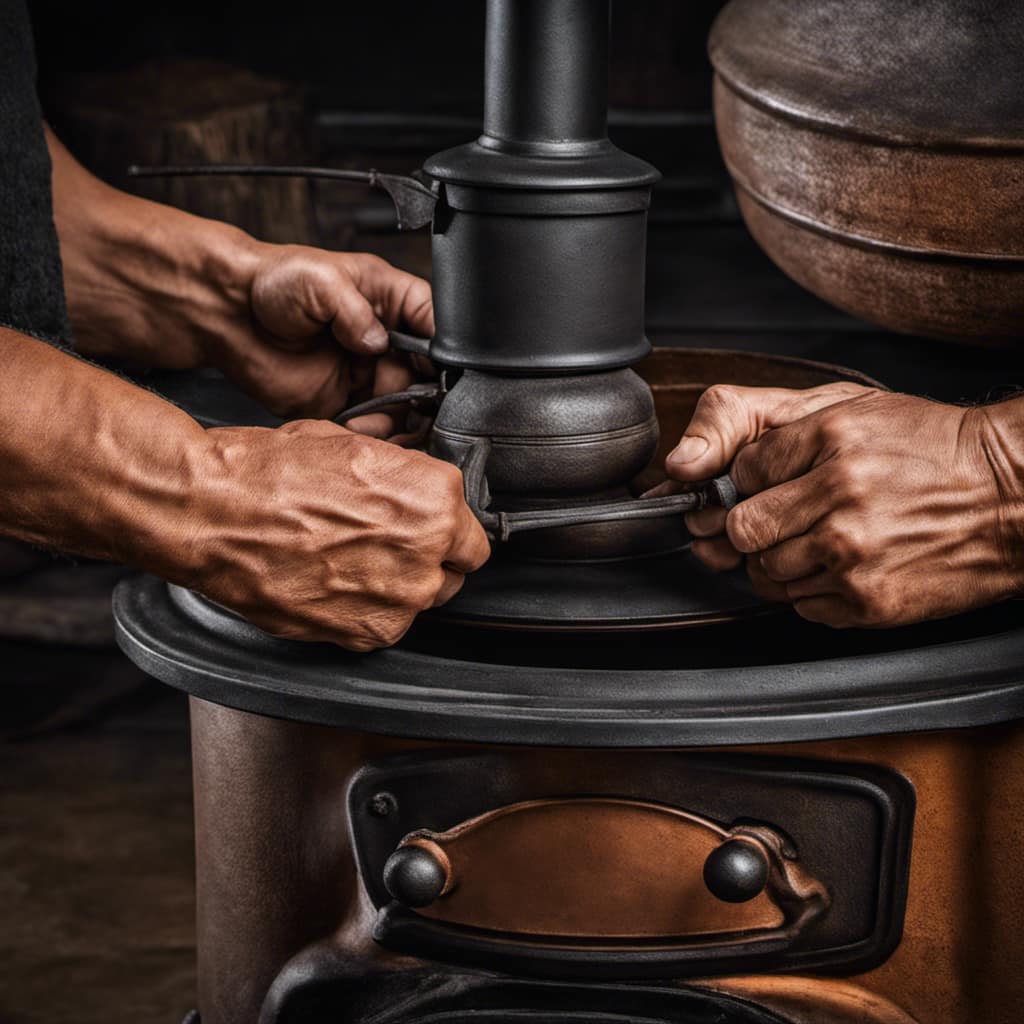
How Can I Determine if My Wood Is Properly Seasoned Before Using It in the Stove?
To determine if my wood is properly seasoned for the stove, I measure the wood moisture content using a moisture meter. It’s crucial for efficient wood stove performance as high moisture levels can cause smoke and reduced heat output.
What Are Some Signs That My Wood Stove Is Not Receiving Enough Air Supply?
When a wood stove doesn’t receive enough air supply, it can lead to poor combustion and smoke. Signs include difficulty starting a fire, slow burning, and excessive smoke. Properly adjusting air vents and avoiding restricted airflow can improve air supply.
Can a Wood Stove Smoke if It Is Not Installed at the Correct Height in Relation to the Chimney?
Yes, a wood stove can emit smoke if it is not installed at the correct height in relation to the chimney. This can cause improper draft and ventilation, leading to smoke escaping into the room.
Are There Any Specific Weather Conditions That Can Cause a Wood Stove to Smoke?
Weather conditions can impact wood stove smoke. Troubleshooting a smoking wood stove involves checking for wind direction, air pressure, and outdoor temperature. I’ll explain how to analyze these factors and make adjustments for optimal performance.
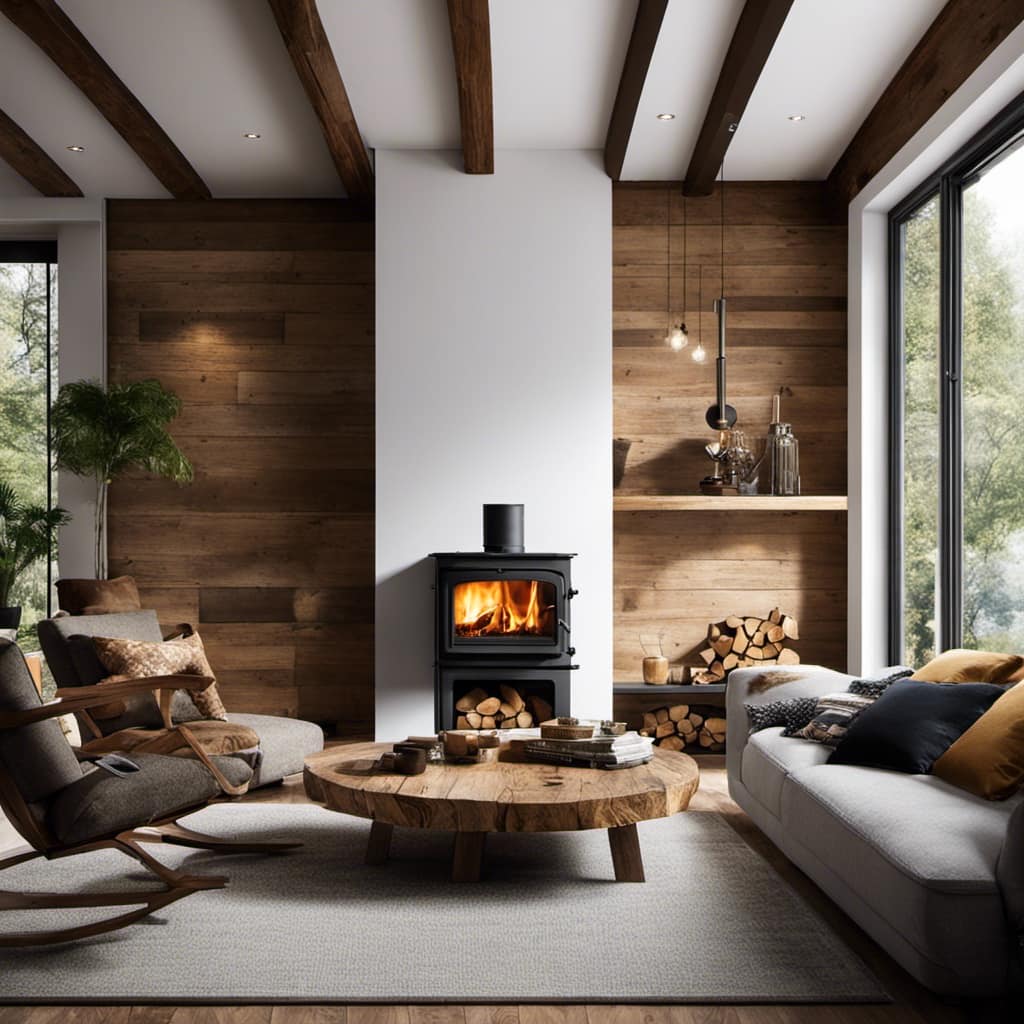
Conclusion
After analyzing the various reasons behind wood stove smoke, it becomes evident that certain factors can impede its smooth operation.
The importance of ensuring sufficient draft, using quality and dry wood, and maintaining proper chimney and stove functionality can’t be overstated.
Additionally, understanding and adapting to environmental conditions affecting combustion efficiency is crucial.
By addressing these issues proactively, one can optimize the performance of their wood stove and minimize smoke-related inconveniences.
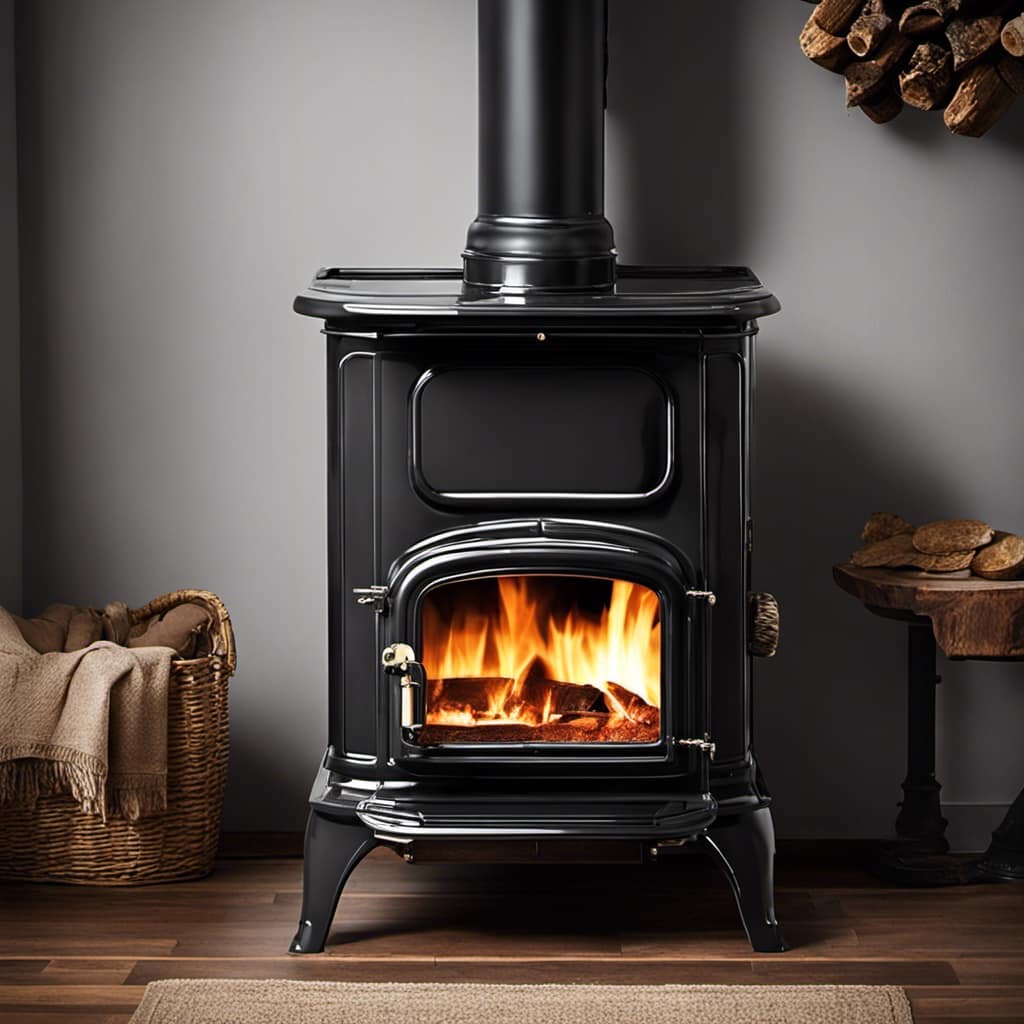
Growing up surrounded by the vast beauty of nature, Sierra was always drawn to the call of the wild. While others sought the comfort of the familiar, she ventured out, embracing the unpredictable and finding stories in the heartbeat of nature.
At the epicenter of every remarkable venture lies a dynamic team—a fusion of diverse talents, visions, and passions. The essence of Best Small Wood Stoves is crafted and refined by such a trio: Sierra, Logan, and Terra. Their collective expertise has transformed the platform into a leading authority on small wood stoves, radiating warmth and knowledge in equal measure.



